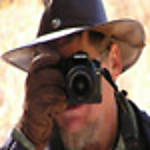1⁄35WWII German AFV Colours
1. Vehicles commissioned in 1939 were painted in the following manner. The base colour dominated the camo pattern by 66%, with soft contours between colours.
|
Anthrazitgrau/Signalbraun, 1935-1939 |
|||
|---|---|---|---|
|
RAL Designation |
Note |
Vallejo M/C. |
Other Equiv. |
|
7016 Anthrazitgrau |
Factory Base Coat |
#055 M/A |
Humbrol 79 |
|
8002 Signalbraun |
Disruptive Pattern |
#818 |
Tamiya X-9 |
2. Schwartzgrau thus replaced the earlier two-colour pattern in 1940, in order
to save paint. AFV's in Op. Barbarossa (Kursk) in 1943 are documented in
Schwartzgrau with Dunkelgelb patches, typically in the recommended domination of
schwarzgrau's percentile of 66%. I.e.~ 2-1
|
Panzergrau / Schwartzgrau |
|||
|---|---|---|---|
|
RAL Designation |
Note |
Vallejo M/C. |
Humbrol. |
|
7021 Schwartzgrau |
Factory Base Coat |
862 |
182 |
3. Schwartzgrau vehicles deployed to the African front were repainted in a new
base colour with disruptive patches. The base colour dominated the camo pattern
by 66%, with soft contours between the colours.
|
Afrikakorps Camouflage 1941 |
|||
|---|---|---|---|
|
RAL Designation |
Note |
Vallejo M/C. |
Humbrol. |
|
8000 Grünbraun |
Base Colour |
879 |
118+93 |
|
7008 Grüngrau |
Disruptive Pattern |
880 |
26 |
4. A new pattern for Africa was introduced in March of 1942. Available paint and
camouflage paste of the earlier pattern was to be used up, resulting in a
mixture of patterns in the interim period. Note: This African theatre camouflage
was also used in Crete / Greece and possibly in the Balkan region.
|
Afrikakorps Camouflage, from 25.03.1942 |
|||
|---|---|---|---|
|
RAL Designation |
Note |
Vallejo M/C. |
Humbrol. |
|
8020 Gelbbraun |
Base Colour |
# 882 |
63+93 |
|
7027 Sandgrau |
Disruptive Pattern |
# 997 |
187 |
5. As of February 1943, vehicles were supplied in the Dunkelgelb factory base
coat, only to be painted with camouflage patterns according to regional and
seasonal requirements. As a result, a great variety of two and three colour
patterns were in existence, even serving alongside each other in the same unit.
Operational vehicles painted Schwartzgrau were not to be repainted in the new
base colour. Instead, camouflage paste was to be used to create two- and
three-colour patterns.
|
Dunkelgelb and Camouflage, 1943 |
|||
|---|---|---|---|
|
RAL Designation |
Note |
Vallejo M/C. |
Humbrol. |
|
7028 Dunkelgelb |
Factory Base Coat |
978 |
93 |
|
6003 Olivgrün |
Disruptive Pattern |
890 / (011 M/A) |
117 |
|
8017 Schokoladenbraun |
Disruptive Pattern |
872 / (041 M/A) |
177 |
6. As from August 1944 the ambush pattern was designed to hide vehicles under
foliage, certainly a consideration in light of allied air superiority following
the D-Day Normandy landings. This pattern was factory applied, using standard
designs.
|
Ambush Camouflage, from 19.08.1944 |
|||
|---|---|---|---|
|
RAL Designation |
Note |
Vallejo M/C. |
Humbrol. |
|
7028 Dunkelgelb |
Factory Base Coat |
978 |
93 |
|
6003 Olivgrün |
Disruptive Pattern |
890 |
117 |
|
8017 Schokoladenbraun |
Disruptive Pattern |
872 |
177 |
7. A simplified process of applying the three colour disruptive pattern, using
the dark red primer as the base colour and adding disruptive patterns of
Olivgrün and Dunkelgelb at the factory. Schwartzgrau may have been used as an
alternative to Dunkelgelb on occasion.
|
Red Primer and Camouflage, from 31.10.1944 |
|||
|---|---|---|---|
|
RAL Designation |
Note |
Vallejo M/C. |
Humbrol. |
|
8012 Dark Red Primer |
Factory Base Coat |
# 982 |
? |
|
7028 Dunkelgelb |
Disruptive Pattern |
978 |
93 |
|
6003 Olivgrün |
Disruptive Pattern |
890 |
117 |
|
7021 Schwartzgrau |
Disruptive Pattern |
862 |
182 |










